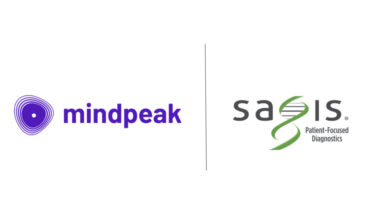Analysis of Pooled Data from TEPEZZA® (teprotumumab-trbw) Clinical Trials Reinforces Safety Profile in People with Thyroid Eye Disease (TED)

— Data presented at ENDO 2022 indicates low rates of hyperglycemic events were easily controlled, did not cause treatment disruption and were most often seen in patients with pre-existing diabetes —
— A separate poster presentation examined response to TEPEZZA in patients who were mildly hypothyroid and found outcomes were consistent with those in the overall pooled population —
DUBLIN–(BUSINESS WIRE)–Horizon Therapeutics plc (Nasdaq: HZNP) today announced results of a new analysis examining rates of hyperglycemia among patients treated with TEPEZZA for TED compared to placebo in the Phase 2 and OPTIC Phase 3 clinical trials. These results were presented as part of the annual conference of the Endocrine Society, ENDO 2022, June 11-14 in Atlanta, Georgia. Data will also be published in a supplemental issue of the Journal of the Endocrine Society. TEPEZZA is the first and only medicine approved by the U.S. Food and Drug Administration (FDA) specifically for the treatment of TED – a serious, progressive and potentially vision-threatening rare autoimmune disease.1
Results of the clinical development program demonstrated TEPEZZA markedly improves symptoms of TED, including proptosis and diplopia. Since FDA approval in 2020, Horizon has continued to analyze available data concerning TEPEZZA use in the clinic to understand the overall safety profile, including rates of high blood sugar, or hyperglycemia, while on therapy. For this analysis, data were pooled from clinical trials to review blood glucose and hemoglobin A1C (HbA1c) measurements in participants, including both those previously diagnosed with carbohydrate intolerance/diabetes mellitus as well as those without histories of either. Patients in clinical trials had blood glucose and HbA1c checked before study entry and were monitored throughout the trial. Patients with diabetes were required to have well-controlled stable disease to enter the study.
The analysis found a total of nine adverse event (AE) reports of hyperglycemia in eight patients (8/84, 10%) who received TEPEZZA, and one patient (1/86; 1.2%) who received placebo. The majority (5/8, 63%) of patients who experienced hyperglycemia while taking TEPEZZA had pre-existing diabetes. Of the hyperglycemic AEs reported in the TEPEZZA-treated patients, all were controlled with medicine. All reported AEs were grade 1 (>ULN-160mg/dl) or grade 2 (161 – 250mg/dl), and none led to study discontinuation. HbA1c levels increased by 0.22 percent in those treated with TEPEZZA compared to 0.04 percent among placebo patients.2
“When making treatment decisions for patients, awareness of underlying health conditions, like pre-existing diabetes, is important as they might increase risk for certain adverse events,” said Terry Smith, M.D., study author and endocrinologist at the Kellogg Eye Center-Michigan Medicine and University of Michigan. “This analysis should provide prescribers confidence that increased blood glucose levels are predominantly seen in Thyroid Eye Disease patients who have pre-existing diabetes. Importantly, with appropriate monitoring and medication, these increases can be effectively controlled. With that said, it is strongly recommended and emphasized that blood sugar levels be evaluated and monitored in all individuals treated with TEPEZZA, and not just those with diabetes.”
A separate post-hoc analysis of pooled clinical trial data assessed the efficacy of TEPEZZA in mildly hypothyroid patients, defined as those with low baseline FT4 levels (n=9). Responses in patients who were mildly hypothyroid were consistent with those in the overall pooled population, including mean proptosis reduction (2.9 mm and 3.14 mm, respectively); diplopia response (86% and 70%, respectively); and clinical activity score (CAS) response (67% and 62%, respectively).3
“Thyroid Eye Disease can be devastating for those living with it – taking a significant toll on both mental and physical health – and TEPEZZA has fulfilled the need for an approved treatment option that would treat the symptoms of the disease,” said Jeffrey W. Sherman, M.D., FACP, executive vice president, chief medical officer, Horizon. “We are committed to a positive patient and healthcare provider experience with TEPEZZA and continue to prioritize research that informs treatment decisions.”
About Thyroid Eye Disease (TED)
TED is a serious, progressive and potentially vision-threatening rare autoimmune disease.1 TED often occurs in people living with Graves’ disease, but is a distinct disease that is caused by autoantibodies activating an IGF-1R-mediated signaling complex on cells within the retro-orbital space.4,5 This leads to a cascade of negative effects, which may cause long-term, irreversible damage. TED begins with an acute (active) phase where inflammatory signs and symptoms, such as eye pain, swelling, proptosis (eye bulging) and diplopia (double vision), progress over time.1,6 The disease then enters a chronic phase where inflammation is no longer present or has markedly diminished, but significant signs and symptoms may remain. As TED progresses, the serious damage it can cause includes proptosis (eye bulging), strabismus (misalignment of the eyes) and diplopia (double vision) – and in some cases can lead to blindness.6,7
About TEPEZZA
INDICATION
TEPEZZA is indicated for the treatment of Thyroid Eye Disease.
IMPORTANT SAFETY INFORMATION
Warnings and Precautions
Infusion Reactions: TEPEZZA may cause infusion reactions. Infusion reactions have been reported in approximately 4% of patients treated with TEPEZZA. Reported infusion reactions have usually been mild or moderate in severity. Signs and symptoms may include transient increases in blood pressure, feeling hot, tachycardia, dyspnea, headache and muscular pain. Infusion reactions may occur during an infusion or within 1.5 hours after an infusion. In patients who experience an infusion reaction, consideration should be given to premedicating with an antihistamine, antipyretic, or corticosteroid and/or administering all subsequent infusions at a slower infusion rate.
Preexisting Inflammatory Bowel Disease: TEPEZZA may cause an exacerbation of preexisting inflammatory bowel disease (IBD). Monitor patients with IBD for flare of disease. If IBD exacerbation is suspected, consider discontinuation of TEPEZZA.
Hyperglycemia: Increased blood glucose or hyperglycemia may occur in patients treated with TEPEZZA. In clinical trials, 10% of patients (two-thirds of whom had preexisting diabetes or impaired glucose tolerance) experienced hyperglycemia. Hyperglycemic events should be managed with medications for glycemic control, if necessary. Monitor patients for elevated blood glucose and symptoms of hyperglycemia while on treatment with TEPEZZA. Patients with preexisting diabetes should be under appropriate glycemic control before receiving TEPEZZA.
Adverse Reactions
The most common adverse reactions (incidence ≥5% and greater than placebo) are muscle spasm, nausea, alopecia, diarrhea, fatigue, hyperglycemia, hearing impairment, dysgeusia, headache, dry skin, and menstrual disorders.
Please see Full Prescribing Information or visit TEPEZZAhcp.com for more information.
About Horizon
Horizon is a global biotechnology company focused on the discovery, development and commercialization of medicines that address critical needs for people impacted by rare, autoimmune and severe inflammatory diseases. Our pipeline is purposeful: We apply scientific expertise and courage to bring clinically meaningful therapies to patients. We believe science and compassion must work together to transform lives. For more information on how we go to incredible lengths to impact lives, visit www.horizontherapeutics.com and follow us on Twitter, LinkedIn, Instagram and Facebook.
Forward-Looking Statements
This press release contains forward-looking statements, including statements regarding the potential benefits of TEPEZZA and Horizon’s research plans. These forward-looking statements are based on management’s expectations and assumptions as of the date of this press release and actual results may differ materially from those in these forward-looking statements as a result of various factors. These factors include, but are not limited to, risks regarding whether future data analyses or clinical evidence will be consistent with prior data and the extent to which physicians prescribe TEPEZZA to certain TED patients. For a further description of these and other risks facing Horizon, please see the risk factors described in Horizon’s filings with the United States Securities and Exchange Commission, including those factors discussed under the caption “Risk Factors” in those filings. Forward-looking statements speak only as of the date of this press release and Horizon undertakes no obligation to update or revise these statements, except as may be required by law.
References
- Barrio-Barrio J, et al. Graves’ Ophthalmopathy: VISA versus EUGOGO Classification, Assessment, and Management. Journal of Ophthalmopathy. 2015;2015:249125.
- Smith, TJ, et al. Blood Glucose in Thyroid Eye Disease (TED) in Patients Treated with Teprotumumab: Clinical Trials Data. Poster session presented at: Annual Conference of the Endocrine Society (ENDO); 2022 June 11-14; Atlanta, GA.
- Smith, TJ, et al. Efficacy of Teprotumumab for Thyroid Eye Disease in Hypothyroid Patients. Poster session presented at: Annual Conference of the Endocrine Society (ENDO); 2022 June 11-14; Atlanta, GA.
- Weightman DR, et al. Autoantibodies to IGF-1 Binding Sites in Thyroid Associated Ophthalmopathy. Autoimmunity. 1993;16(4):251–257.
- Pritchard J, et al. Immunoglobulin Activation of T Cell Chemoattractant Expression in Fibroblasts from Patients with Graves’ Disease Is Mediated Through the Insulin-Like Growth Factor 1 Receptor Pathway. J Immunol. 2003;170:6348-6354.
- Bartalena L, Kahaly GJ, Baldeschi L, et al. The 2021 European Group on Graves’ Orbitopathy (EUGOGO) Clinical Practice Guidelines for the Medical Management of Graves’ Orbitopathy [published online ahead of print]. Eur J Endocrinol. 2021 Jul 1:EJE-21-0479.R1. doi: 10.1530/EJE-21-0479.
- McKeag D, et al. Clinical features of dysthyroid optic neuropathy: a European Group on Graves’ Orbitopathy (EUGOGO) survey. Br J Ophthalmol. 2007;91:455-458.
Contacts
Investors:
Tina Ventura
Senior Vice President, Investor Relations
[email protected]
U.S. Media:
Rachel Vann
Director, Product Communications
[email protected]
Ireland Media:
Gordon MRM
Ray Gordon
[email protected]



